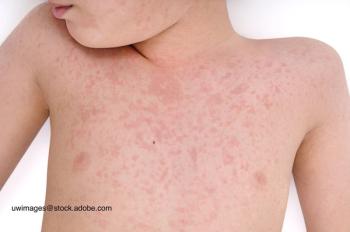
Measles cases continue to add up in the worst outbreak of the viral infection in the United States since 1992.

Measles cases continue to add up in the worst outbreak of the viral infection in the United States since 1992.

A new study highlights the fact that black, Hispanic, and other ethnic minority children who suffer from out-of-hospital cardiac arrest are less likely than their white counterparts to receive cardiopulmonary resuscitation (CPR) from a bystander.

The American Medical Association (AMA) calls out government agencies for deplorable conditions for children and pregnant women in immigrant border facilities.

Already an effective treatment for Clostridium difficile infection, fecal transplantation may offer children with autism new hope.

Adopting technologies with artificial intelligence (AI) will change patient care in many ways. Here’s where AI has been, where it is now, and what it holds for the future of pediatrics.


The Centers for Disease Control and Prevention (CDC) cautions pediatricians and other pediatric healthcare providers to be on the lookout this summer and early fall for symptoms of acute flaccid myelitis (AFM) in young patients who complain of limb and muscle weakness.

A new study from researchers at Columbia University indicate that the solution to increasing influenza immuinzation rates may be simple.

Accept this month’s 5-item quiz challenge and see how well you know the wiles of biofilms in Staphylococcus aureus that deploys a matrix “force field” to evade detection and eradication. What children are especially at risk? What treatment course gives the best outcomes?

Measles is once again a significant public health problem in the United States. Many pediatricians and most parents have never seen actual measles in a child, hence the urgent need to reeducate clinicians and caregivers about clinical manifestations and prevention of the disease.
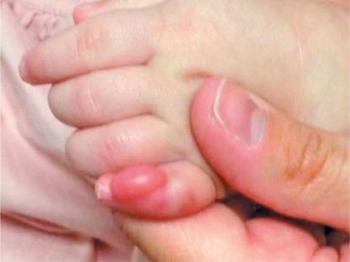
An otherwise healthy 5-month-old girl presents with an asymptomatic, rapidly growing, firm, smooth nodule on the side of her left fifth finger since she was 2 months of age.

Parents who use a web-based educational tool to boost what they know about measuring and managing fever gain significantly more knowledge than parents who follow solely written and verbal instruction, according to a trial in caregivers of children with fever.

A recent study has found that direct-to-consumer (DTC) telemedicine services were more likely to prescribe antibiotics than urgent care centers and pediatric practices, and less likely to follow guidelines on antibiotic use.

Specific therapies for biofilm-related infections are rare. However, studies have shown rifampin to be an effective treatment for these staphylococcal infections in children.

A physician incentive program (PIP) that provides primary care providers (PCPs) with bonuses tied to specific goals to decrease pediatric emergency department (ED) use significantly decreases such visits, according to a retrospective analysis involving 1376 PCPs who participated in the PIP.

The case for medical marijuana in children is just getting started. Here’s how pediatricians can navigate the complexities and discomfort of this issue and address the risks and benefits of pharmaceutical cannabinoids for their patients.

An evaluation of national and state-level trends in obesity prevalence among 2- to 4-year-old participants in the US Special Supplemental Nutrition Program for Women, Infants, and Children (WIC) found that the changes in the 2009 WIC food packages to better align with dietary guidelines are associated with a decline in the risk of obesity among these children.

The later teenaged years are a time of missed opportunities for preventive care and vaccination, according to a new report focused on low rates of meningococcal booster vaccination.
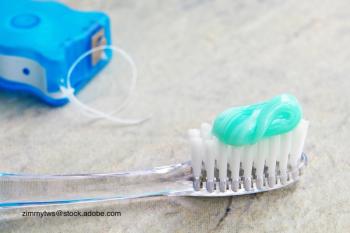
You're a busy person with many things to do and little time to read. Here are 5 articles that give you a quick rundown of important matters for the pediatric provider.

Mothers usually take the title of geriatric pregnancy at an advanced age, but research suggests older fathers may have to take on that title as well.

Bullying has been identified in relatively recent years as a medical problem in addition to being a social problem. Here's how the article "How to identify and treat bullying" highlights evidence- based recommendations for both prevention and identification of affected children and seeks to help us maximize the impact of the care we give our patients.

Parental roles are important to establishing healthy behaviors, but a new report delves into the cardiovascular effects of these relationships and the differences between maternal and paternal bonds.
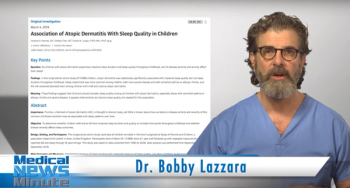
For Contemporary Pediatrics, Dr Bobby Lazzara discusses a study published in JAMA Pediatrics that examined how atopic dermatitis impacted the sleep quality and duration of the 14,000 study participants.

Fathers taking an active role in childcare and supporting their spouse effect positive behavioral and emotional outcomes in their offspring.

Covering the father as both parent and influential partner in childrearing from preconception to entrance into young adulthood, this issue provides the foundation for thoughtful consideration of how we, as nurse practitioners, can address paternal parenting and apply the past 10 years of research results on fathers to better inform our practices.

Intimate partner violence isn’t just an adult problem. A new study reveals that teenagers also face violence from partners, and the results can be deadly.

Fathers’ lifestyle factors could be passed onto their children by epigenetic mechanisms-a finding with public health implications regarding obesity.
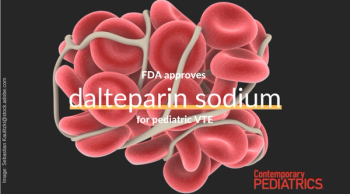
A look at 5 recent approvals from the US Food and Drug Administration (FDA), including treatment for systemic lupus erythematosus, a new gene therapy, and pain relief for patients with irritable bowel syndrome.

New research suggests fathers need to live healthy lives well before conceiving children.
